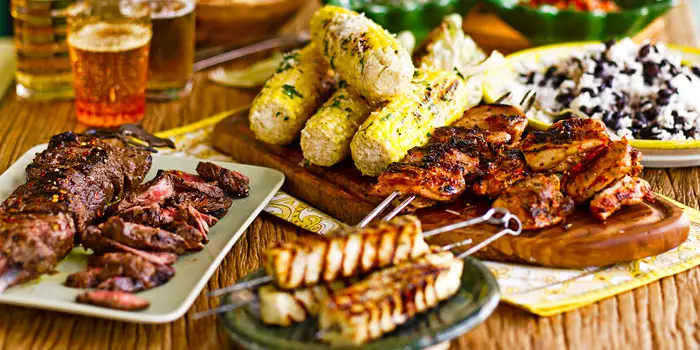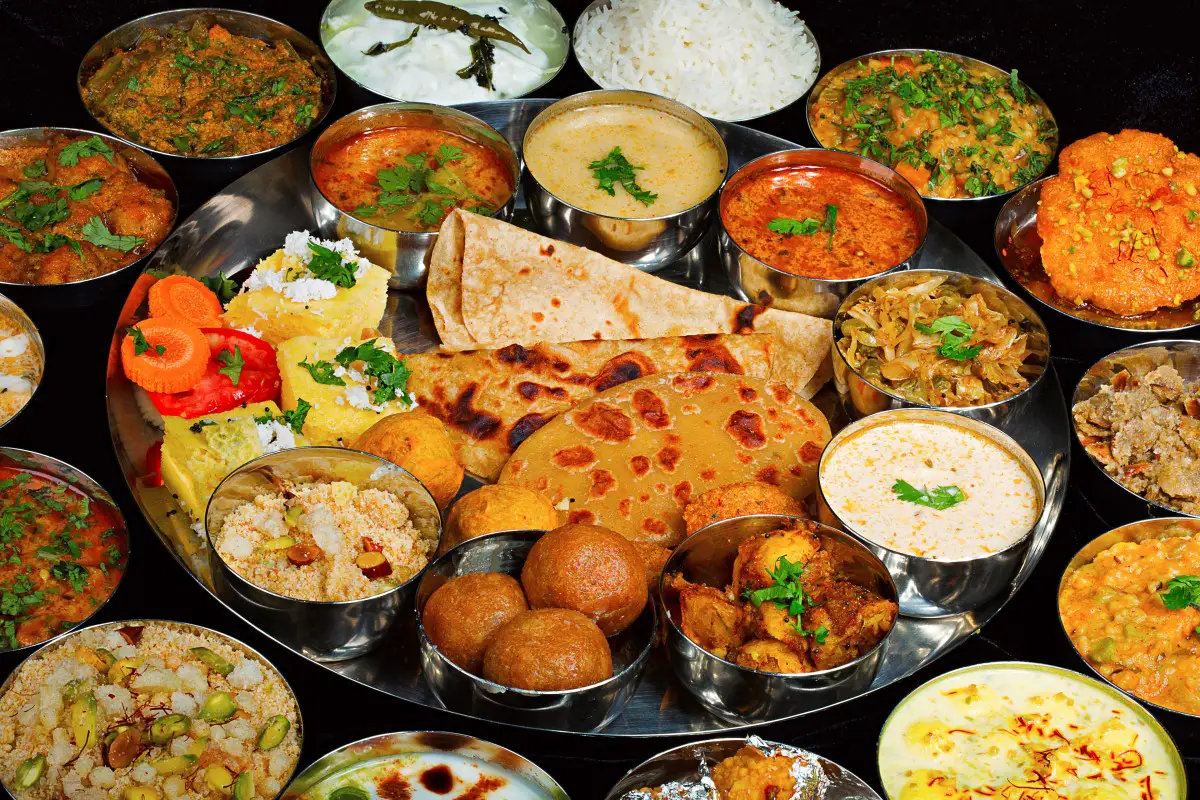Brazil is a colorful country with its cuisine as colorful as its culture and love for sports. One of the largest Portuguese-speaking countries in the world, with both African and Portuguese influence on its food, Brazil is a melting pot of flavors that are simple but impact your taste buds like nothing else.
30 Most Popular Foods to Eat in Brazil
1. Farofa

Doesn’t sound like much since it is basically just fried cassava flour that sometimes includes bits of fried bacon or eggs, but this is something you’ll never really appreciate unless you actually try it. Farofa is unique to Brazil and is served alongside rice and beans. The way it absorbs the juices of the curry and gives you this nice texture to your everyday rice and beans, which is otherwise just mushy, will never make you look down on cassava flour again.
2. Feijão Tropeiro
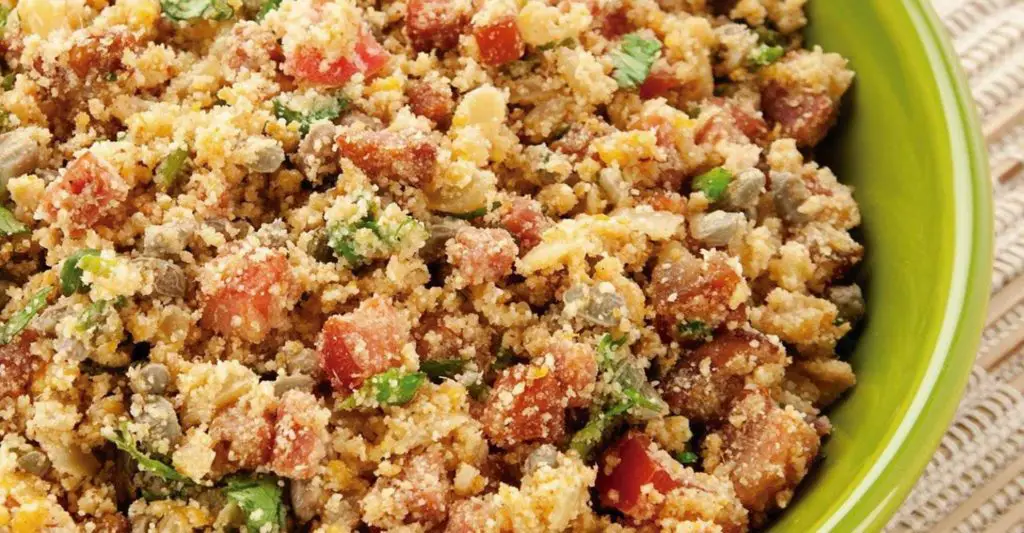
A traditional dish, consisting of pinto beans sautéed in tapioca flour (a characteristic Brazilian ingredient) with eggs, onions, garlic and a surprising twist – bacon. After having this dish, you’ll want to add eggs and bacon to everything. Cooked in a large metal pot, the garlic and spices are added, topped with sliced chard leaves, scallions and finally pre-cooked beans and cassava flour. Simply delightful.
3. Feijoada
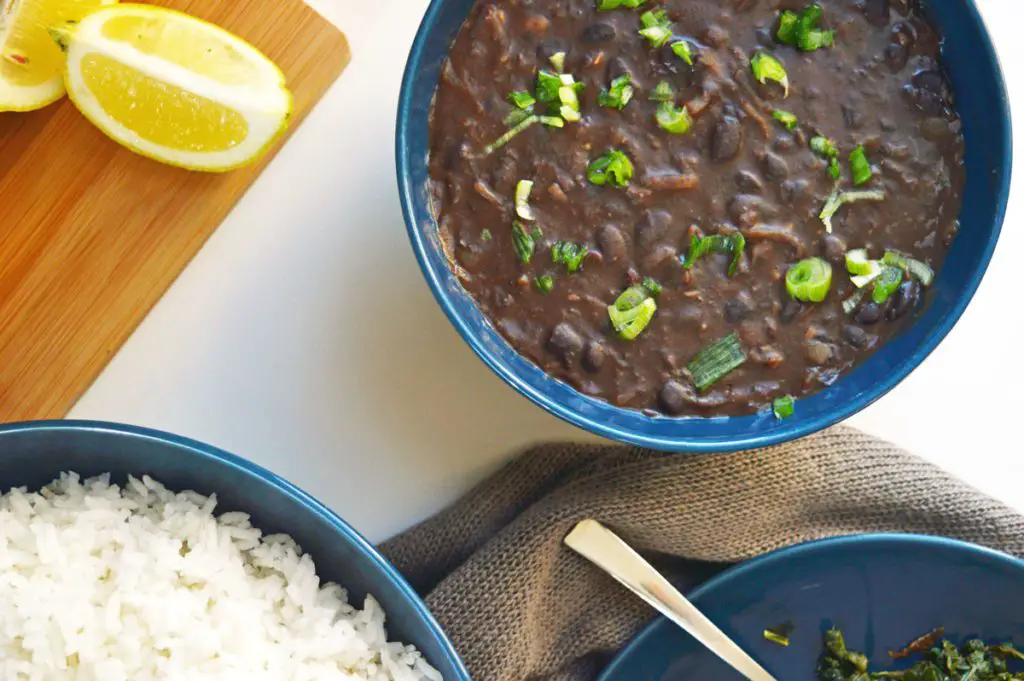
A regional dish from Rio de Janeiro and Brazil’s most famous dish, it could basically be called a bean stew made from traditional black beans cooked with cuts of pork, sausages or beef over a slow flame. Vegetables like okra, pumpkin or even bananas are added with a hearty mixture of spices and cooked in a thick clay pot. The end dish is thick, hearty and delicious stew that is usually served with farofa (toasted cassava flour), white rice, slices of oranges, fried bananas and collard greens. A versatile dish, no two feijoadas can ever be the same.
The best place to have this dish is Casa da Feijoada, which translates to the house of Feijoada that serves numerous variations of this dish.
4. Moqueca de Camarão

A dish which is a mixture of African and Brazilian culinary styles, Moqueca is essentially a made with shrimps stewed in coconut milk and palm oil along with various spices and vegetables and simmered up to an hour. A counterpart to the more meatier Feijoada, Moqueca is a signature seafood dish that sometimes includes salmons and prawns. Like feijoada, this dish can be found nationwide in various permutations.
To try Moqueca de Camarão head to Cantinho do Curuca which has a beachside location with a party atmosphere.
5. Vatapá

Another stew-like delicacy by the Brazilians, this thick-gravy like dish is made from shrimp or fish cooked in peanut sauce, coconut oil and palm oil. Herbs, spices, onions and bell peppers also added till it comes out a spicy creamy dish that is enjoyed with white rice or another popular dish Acaraje. Enjoyed in many regions of Brazil, you are sure to have second helpings!
6. Romeu e Julieta
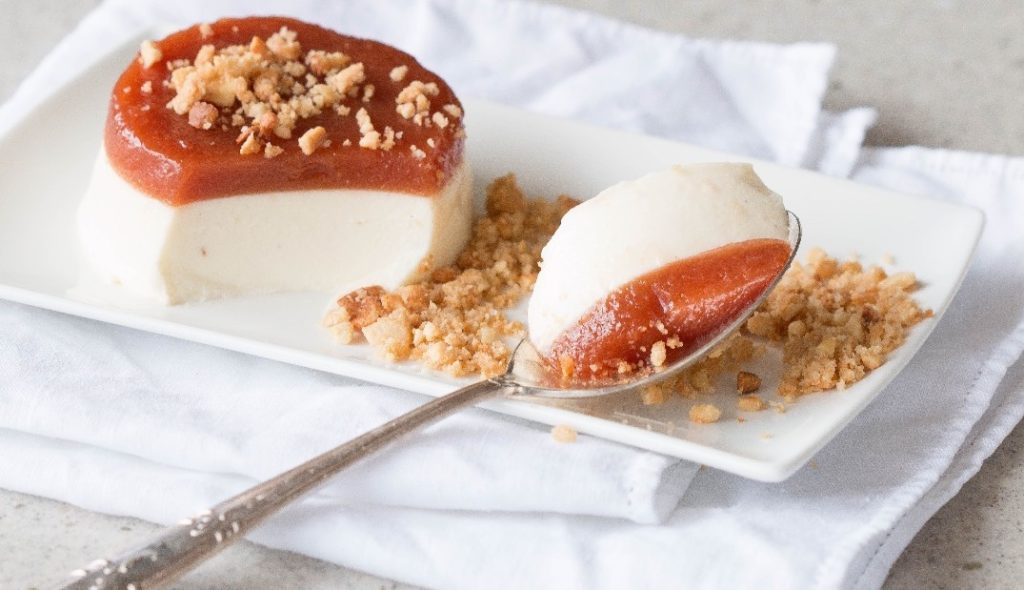
A surprising combination of things you couldn’t have imagined going well with each other, this simple dish is made of a thick jelly-like paste of guava placed between two slices of mild white cheese. Served as a cheesecake, as a part of a pie, or simply as guava jelly and cheese, you’d be left wondering who came up with this and why it hasn’t caught on worldwide!
7. Empadão
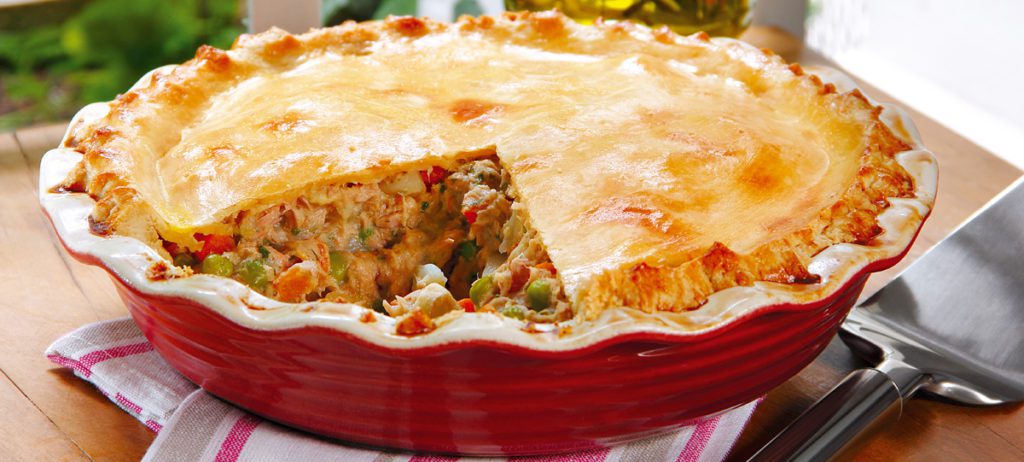
Similar to a chicken pot pie, this little snack has a crispy crust and is soft and savoury inside. A large torte is filled with chicken or any meat of your choice and a mix of veggies like hearts of palm, corn, peas and olives. Served in most food stalls and cafes, it is also enjoyed for a family get-together on the weekends.
8. Salpicão
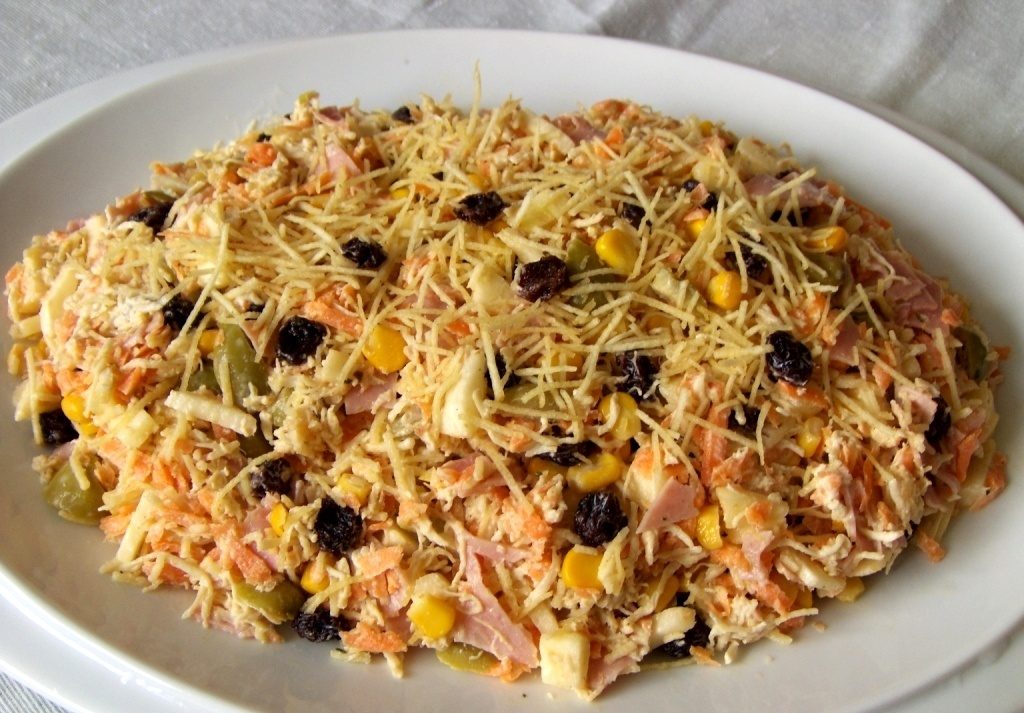
You can’t go more Brazilian than this. Salpicao is a traditional salad made from a hodgepodge of a lot of interesting flavours. Shredded chicken is mixed with mayo, carrots, apples, ham, olives, raisins, peas and topped with shoestring potatoes or crispy french fries which gives it a crunchiness. Ideal for a heavy lunch, it is quick and easy to make, delicious and filling at the same time! Found in most street food stalls, every place has its own twist.
9. Pavé
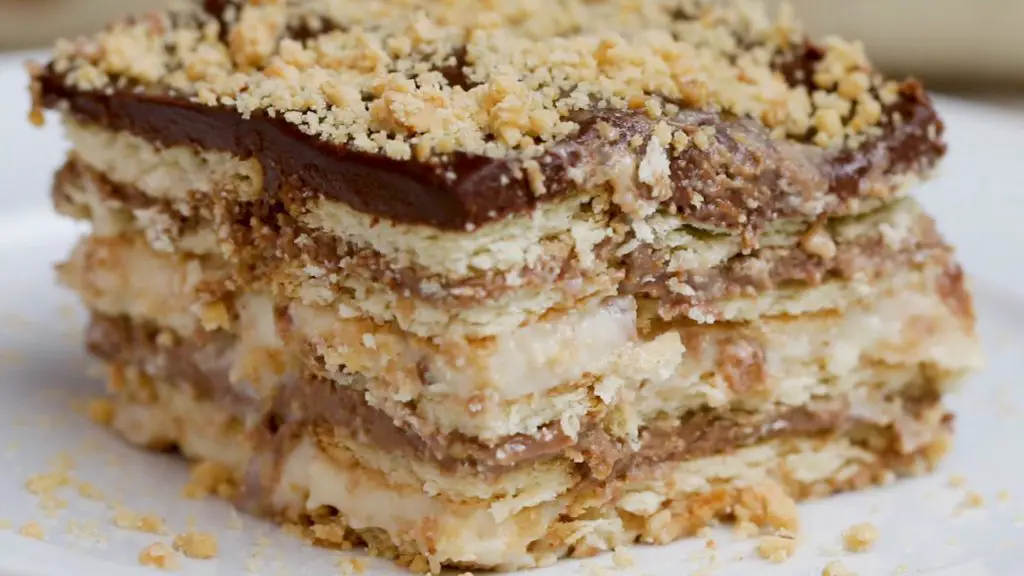
Beware of this Brazilian dessert because is insanely addictive! Pave is a Brazilian tiramisu but with its own kick. A no-bake dessert is made from layers of different cookies, creams, fruits, and chocolates. Although it doesn’t have coffee in it, it does have a hint of liquor. The recipes for Pave range from sophisticated to the simplest homemade ones, and probably every combination of flavours out there has already been invented. From strawberry Pave to white chocolate pave, you name it, and it exists.
10. Quindim
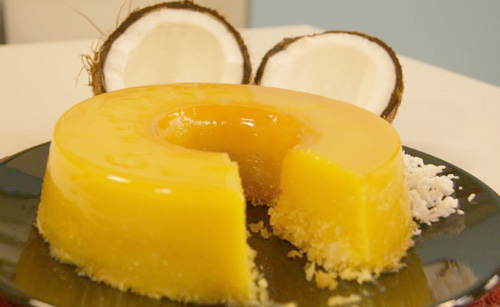
A must-have traditional Brazilian dessert, these cupcake-sized baked goodies are made from egg yolks, butter, sugar, and grated coconut. A very sweet dessert that looks like a small circular custard, it has a yellow color from the egg yolks a toasted golden bottom dense with coconut and a gel-like custard on top that sticks to the roof of your mouth when you take a bite.
11. Bacalhao
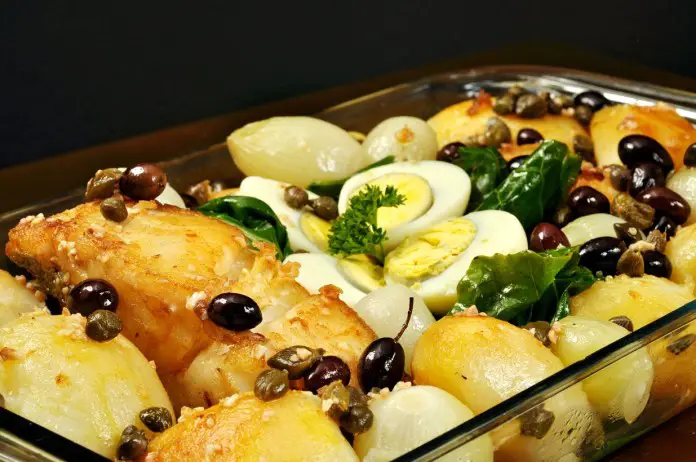
Bacalhao is a dish sourced from salted codfish. Dried salted codfish was a staple in Portugal where salting was a way of preserving food. Since Brazil was a Portuguese colony, Bacalhao became a popular dish served in Brazilian homes. Salted cod goes through a process of rehydration and desalination for a period of one full day which makes this a dish that is had once in while during huge family dinners. This cod is now baked with potatoes, olives, onions, tomatoes, herbs, and spices and served with white rice on the side and a drizzle of olive oil. Perfect for a wholesome meal with tidbits of all your favourite flavours.
12. Galinhada

A one-pot dish that serves as the main course, this is basically a chicken stew that is cooked with rice. Galinhada literally means chicken and this mix of rice and meat is cooked in saffron which gives it a traditional yellow colour. Enjoyed best during cold winter nights when you want something warm and filling or during family gatherings and parties.
13. Maniçoba
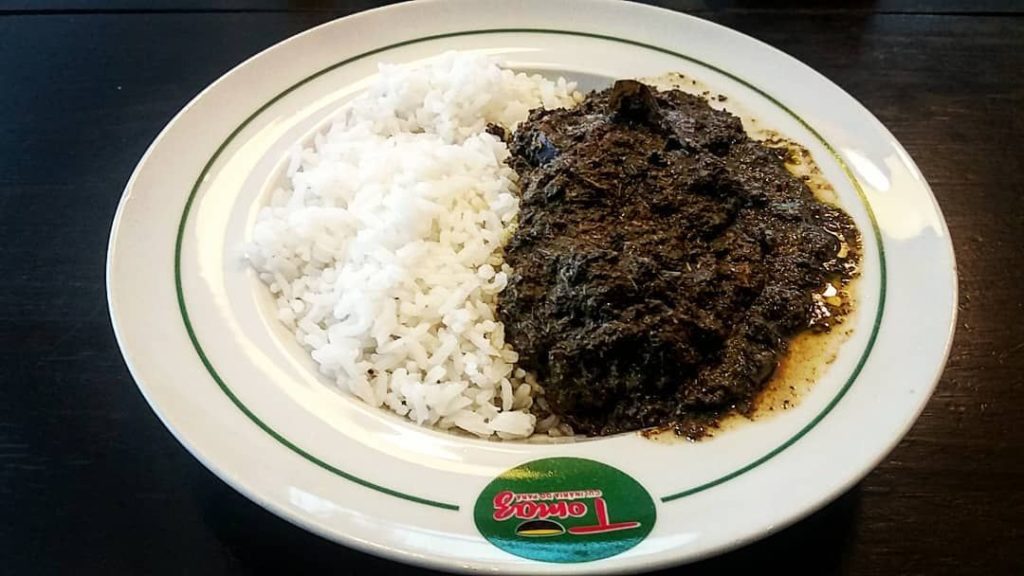
One of the most famous dishes in northern Brazil, this is a dish like no other. Made from the leaves of the manioc plant i.e. cassava, it is prepared over a period of 7 days. Since the leaves are poisonous, they are crushed and boiled in water for a week until it loses their green colour and takes on a black hue. Pork and beef are added to this broth and finally served with white rice, manioc flour and tucupi sauce with hot peppers. Eaten during religious festivals, this is something one must definitely try!
14. Cachaça
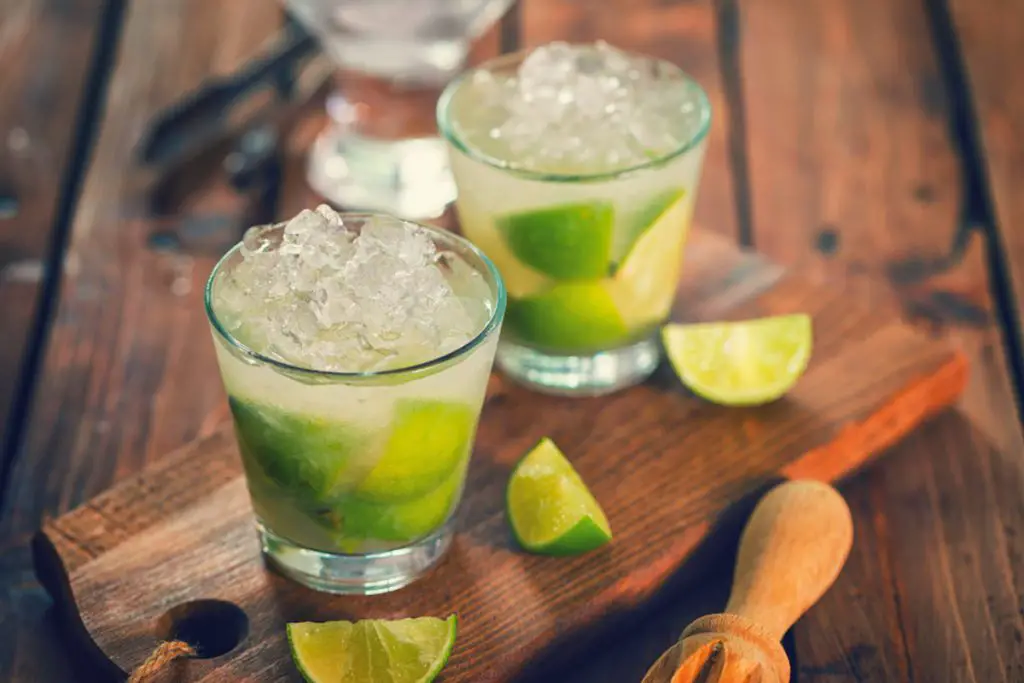
For all the spirit lovers out there, Brazil won’t disappoint you. Cachaças is a distilled spirit made from fermented sugarcane juice. The national spirit of Brazil, this drink is exclusively used as a mix in tropical drinks with caipirinha being the most popular cocktail which is fiery and uses uncaged and uncolored cachaças. Also sipped straight by most drink-lovers, they take it in and linger on the taste in their mouth, just like the Russians do with their vodka.
15. Canjica
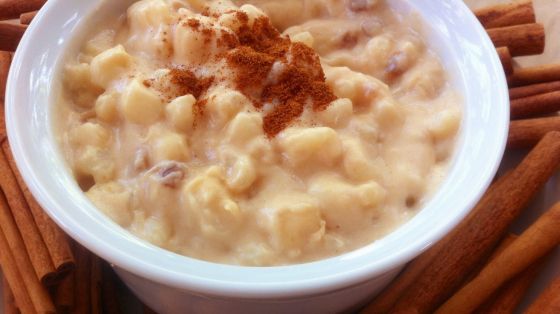
A dessert most enjoyed during Festas Juninas(translates to something like June parties), Canjica is a humble porridge made with grated fresh corn. This sweet, warm pudding is made by grating ears of fresh white corn to extract the juice from them, and then milk, sugar, and spices are added. This concoction is cooked till it reaches a thick creamy consistency with subtle hints of cinnamon and vanilla. Served in community stalls during the Festa Juninas, this serves as a great snack for dessert or even breakfast, which is now available all year round.
16. Churrasco
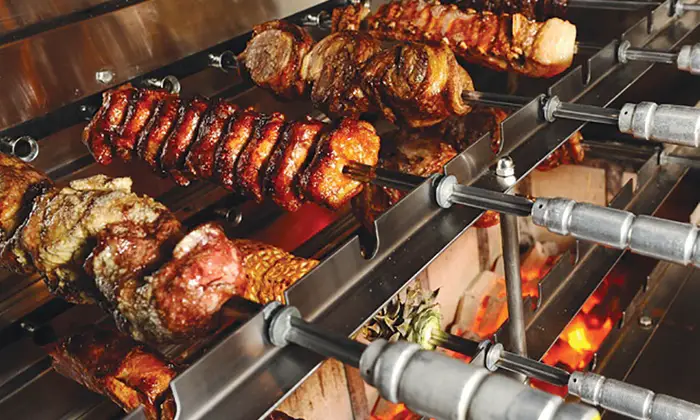
One of the Brazilian specialties is Brazilian style barbeque which is called churrasco. Deeply ingrained in Brazil’s food culture, barbequing involves coating the meat with salt, herbs, wine and other dressings depending on the meat. The meat on skewers is slowly roasted over an open-flamed charcoal bed. Once the outer layer is cooked and crisp, the skewers are carried around to serve, usually with a sprinkle of farofa for the real Brazilian touch. It is enjoyed with rice and beans, fried plantains or cheese bread, and is a delight to eat with different cuts and chunks of meat with smoky wooden flavours.
Try churrasco at Porcão Rio’s where they’ll indulge you in a wide range of barbeque while enjoying the view through their huge windows
17. Bauru
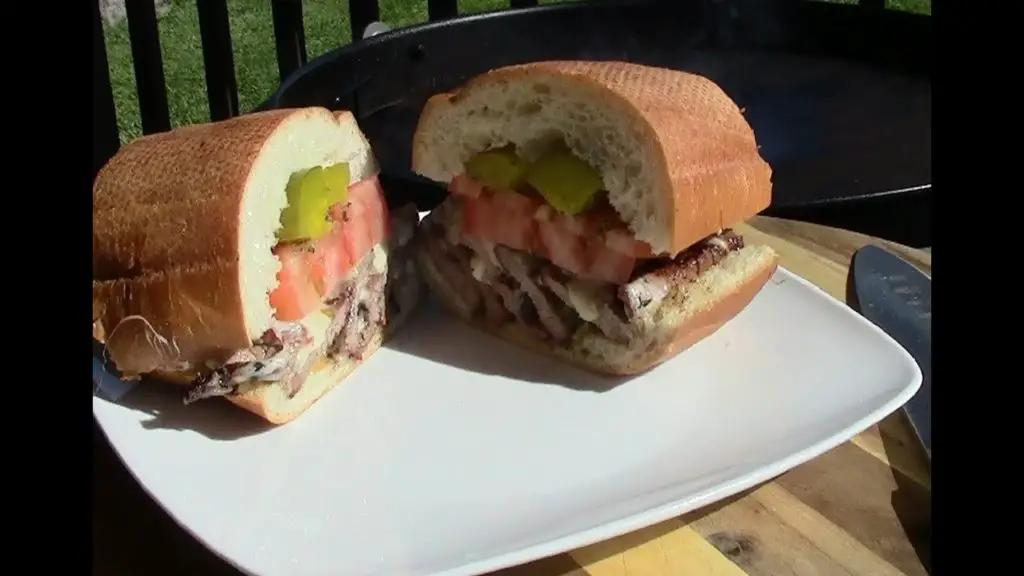
A common sandwich in Brazil, this is made using a french bun after removing its inner part. Then stuffed with all good things in life including melted cheese (mozzarella), slices of roast beef, tomatoes and pickled cucumber. A dish that can be whipped up by anyone that is hungry or served in most café’s and food joints, a humble sandwich never tasted better!
18. Mocotó
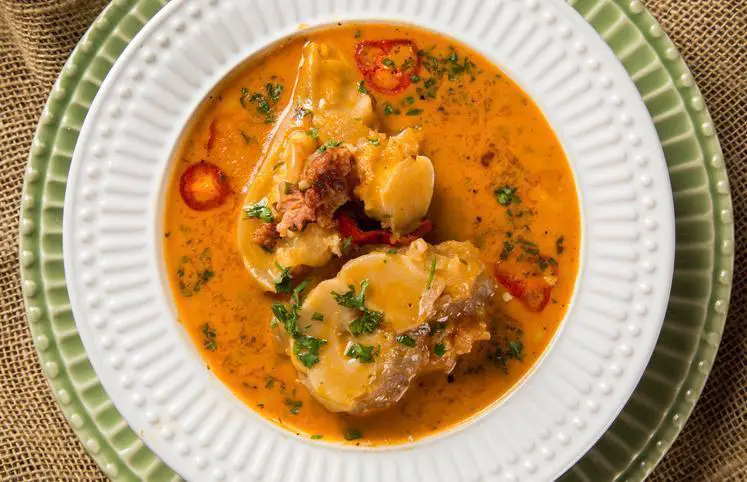
This might come as a surprise since it is made from cow’s feet, stewed with vegetables and made into a thick savoury soup. A dish that warms one up and can be enjoyed on winter nights, was brought in by Portuguese immigrants who lived in cold climates during winters. Not having given up their Portuguese roots, this dish has stayed in tropical Brazil and is gulped down by Brazilians at the end of the night to ward off a hangover or in the mornings to compensate for the heavy dinner last night. Every person has their own recipe but asks a Brazilian and they’ll swear only by their mother’s mocoto!
19. Bobó de camarão
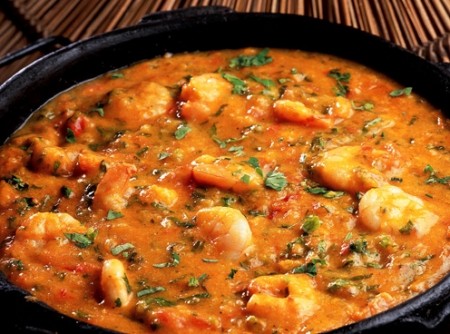
Referred to as shrimp bobó in English, this is a shrimp chowder made from cassava and obviously shrimp, which has heavy African influences. Like most Brazilian curries, this is made in palm oil, with shrimp added to a cassava puree to thicken the curry. Coconut milk and other regional ingredients are also added which gives it a typical Brazilian touch. Served with white rice or eaten as a dish in itself, this is one of the many shrimp dishes that can be enjoyed in this country which has influences from different cultures.
20. Olho de Sogra
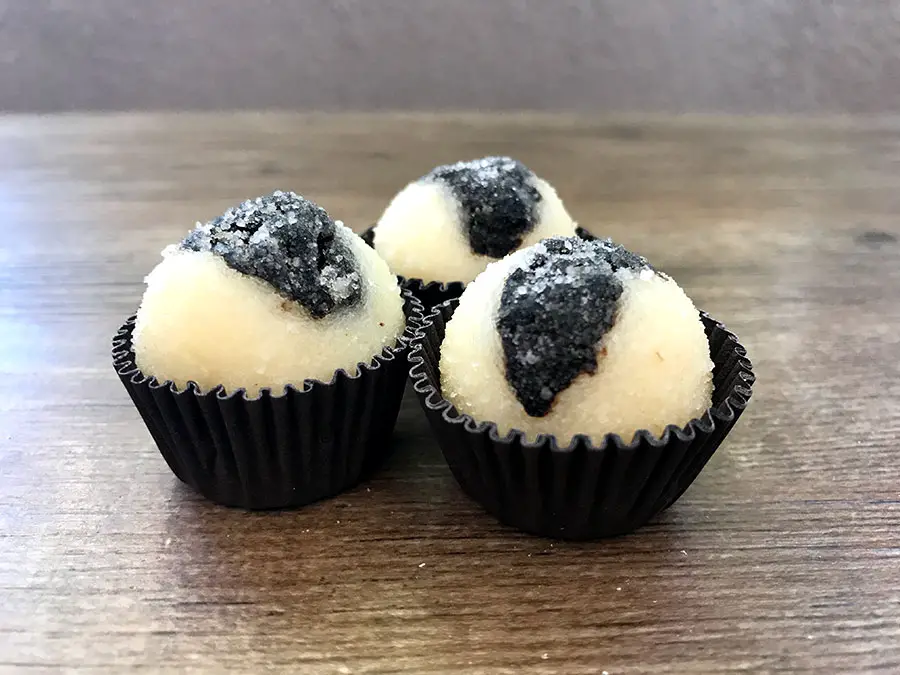
In Portuguese, this name means “eye of the mother-in-law”, which is a funny name, but it has nothing to do with anyone’s mother-in-law. Made from a pitted prune stuffed with a mixture of egg yolk, coconut and condensed milk (which is a recipe for Brazilian Beijinhos (coconut desserts)), these sweets are then rolled in granulated sugar. Since this candy looks like an eye, it has been named such, but these little bonbons are too good to be missed!
21. Pao de Queijo
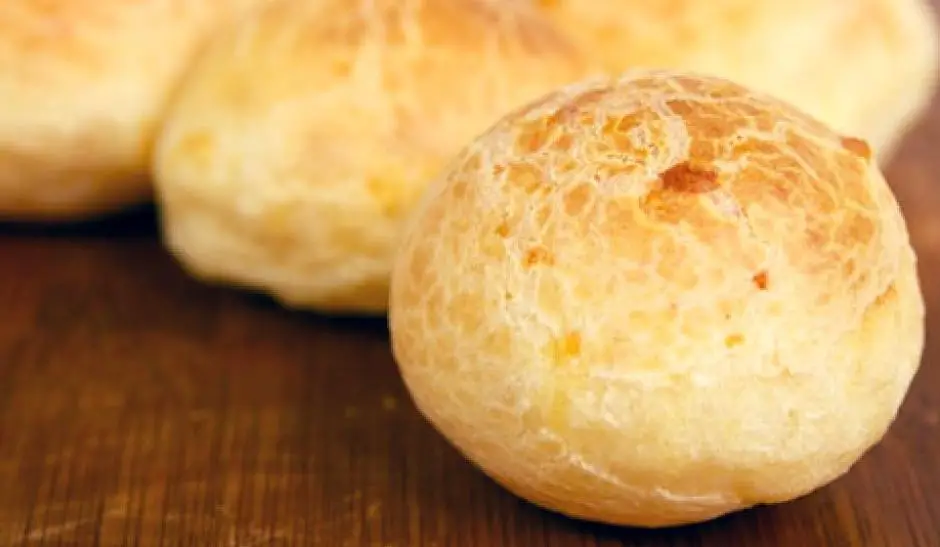
Pao de Queijo is the Portuguese pronunciation for Brazilian cheese bread. It is spherical and usually small in size. Baked in pure minas cheese, it is considered a popular breakfast food in Brazil and the traditional Brazilian recipe.
Pao de Queijo has evolved since ancient times as that of the slaves but had only one difference that is it had no cheese in the spherical rolls, whereas now it is available as a proper cheese bread roll. Milk and cheese are the main ingredients of the dish. Inexpensive and easily available, Pao de Queijo is often sold on streetside stands, as also it is available in groceries, supermarkets, and bakeries.
22. Moqueca

It is a Brazilian recipe savored all over Brazil. The type of dish is based on a saltwater fish stew. Moqueca forms an important part of Brazilian cuisine because it prefers a mix of boneless fish species like prawns, shark fish or even swordfish for that matter.
The moqueca dish consists of fish stew, onions, garlic, and coriander. Practically, the procedure of cooking moqueca is very slow and cooked in a terracotta vessel container. Moqueca has two variations moqueca baiana and moqueca capixaba.
23. Brigadeiros

The Brigadeiros is a traditional Brazilian dessert dish as it is a part of the culture and is also identified as a national icon of Brazil. For the ones who have a sweet tooth, this dish touches their sophistication levels.
Brigadeiros can be easily made at home and available in cake shops. They are small in size, generally shaped like balls covered with chocolate sprinkles, and served in a cupcake mold. These are available in different variations and hold a very sentimental value to fellow Brazilians.
24. Acaraje
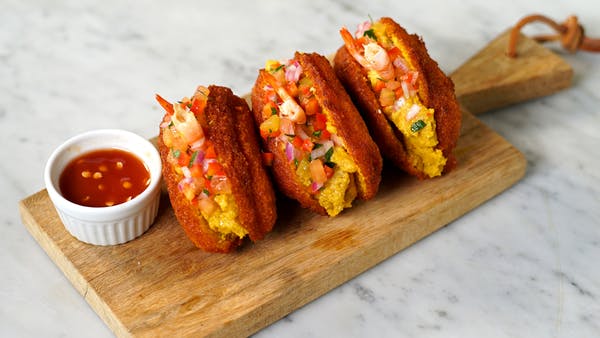
Acaraje originated from West Africa and is now considered a flavored dish in Brazilian cuisine. It is a dish made using peeled beans formed in a ball-shaped structure and then deep-fried in palm oil.
Acaraje includes a filling that sometimes consists of only vegetables like onions, garlic, and tomatoes; parsley clubbed together with spicy sauces. In contrast, the filling is generally made using prawns, and other vegetables with variations in sauces are found in Brazil. It is a religious offering to God in Brazilian culture and a popular street food loved by all.
25. Terere

Terere is the most popular beverage consumed in Brazil. A mixture of various elements forms it and is so chilled that it soothes every taste bud. Terere originally comes from Paraguay.
Terere is most probably consumed when the city experiences a warm climate; the drink is heavily believed to be consumed as a detox drink and non-alcoholic beverage. Lime, orange, or even pineapple are used to prepare terere. Many people drink terere with added and garnished herbs that serve as medicinal and refreshing.
26. Cajuzinho
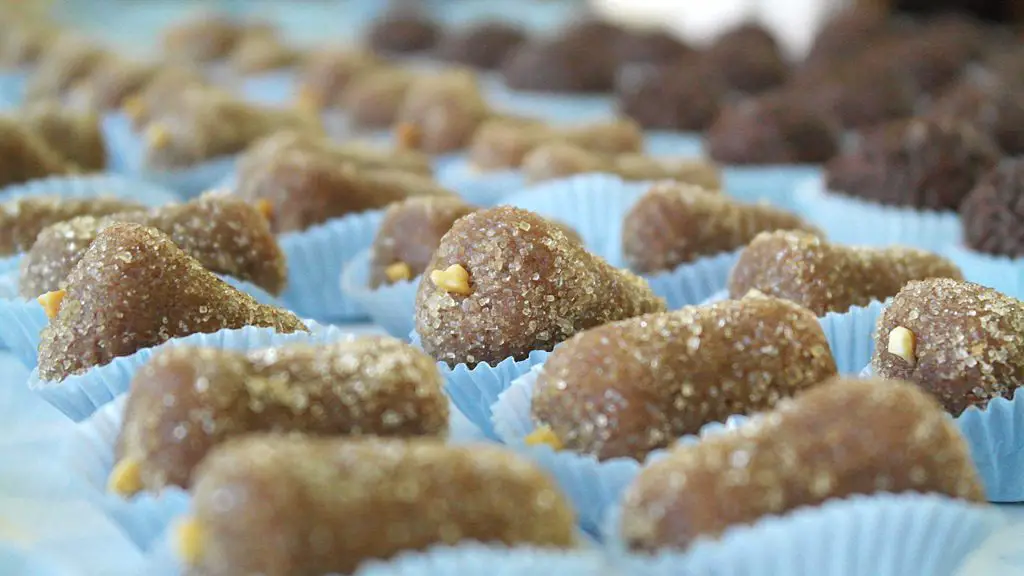
The name ‘Cajuzinho’ suggests little cashew is a popular sweet dish in Brazil. Cajuzinho is shaped in a cashew nut shape. It is available in variations in terms of its shape and flavors, consisting of different fillings of dry fruits or sometimes peanuts, finely chopped, which prepares for a perfect filling.
After being given the shape of cashew nuts, they are dipped in sugar granules and then served in cupcake moulds. Cajuzinhos are sometimes garnished with tiny pieces of cashew finely chopped, which look like tiny biscuit crumbs. The most interesting fact about cajuzinho is that it is certainly available at every Brazilian party.
27. Mortadella
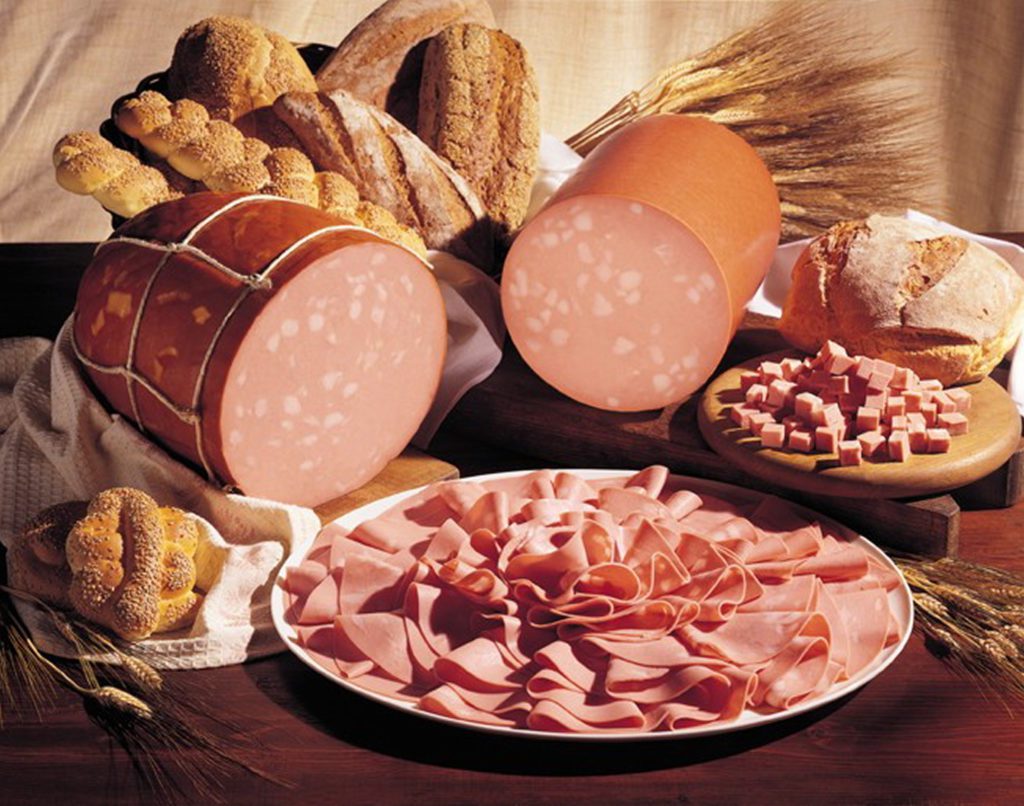
Mortadella comes from Italian origin. It is a flavored sausage that is made using pork meat. Mortadella is available in different variations as it also is made up of turkey meat, chicken, and beef meat. It is flavored with spices like black pepper, berries, and pistachios. This juicy mortadella is used to prepare various other dishes like salads, hamburgers, subways, etc.
28. Sarapatel
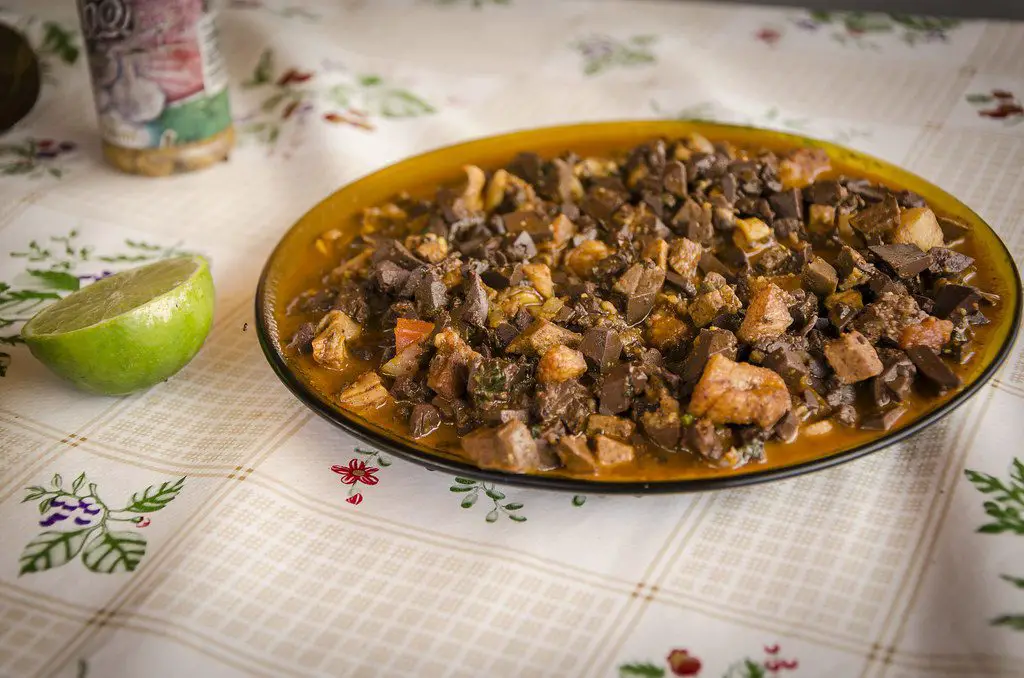
Sarapatel or sorpotel is a dish of Portuguese origin that is now common in Brazilian cuisine. The main ingredients of this dish are meat. May it is chicken, pork, turkey meat, beef, goat, or lamb meat, sarapatel is prepared and served in the unique Brazilian cultural style, which is kind of similar to the dish prepared in Goa and the Konkan region. In Brazil, the usage of vinegar differs from region to region as also the doce-shaped meat size differs. The sauce and the spices are different and are served with steamed rice or bread.
29. Quindim
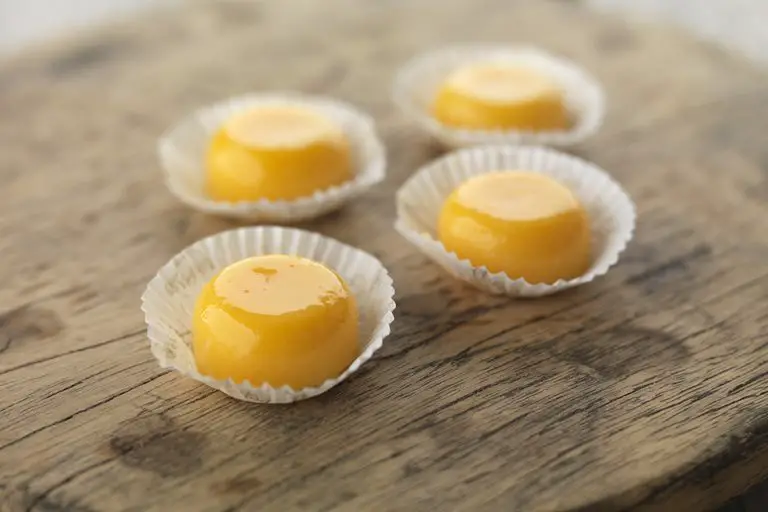
If you ever visit Brazil and wish to eat something baked, quindims are the right choice. It is a popular Brazilian baked dessert; it’s mainly made using egg yolks, ground coconut, and sugar to add a lot of sweetness. It is a typical custard and, when served, looks like an upturned cup. Quindim has no variations. It is available with a glistening surface and is yellow in color. Quindim can also be made in a large ring mold and served in slices using coconut shreds to garnish the base.
30. Feijoada

Feijoada is considered the national dish of Brazil. It traces its origins from the Portuguese cuisine, but the recipe for its preparation differs from country to country. Feijoada is stew prepared with beef or pork along with different veggies but beans are the most common in Brazil. So black beans and meat are the basic ingredients feijoada is made up of. The stew is best prepared over low heat in a clay pot. The spices and flavors involved in the preparation of feijoada give it a different blend. Feijoada is commonly served with rice and other side dishes like sausages, salad, etc.
The blend of flavors and spices used in different Brazilian cuisine dishes brings the concept of “Brazilianess” to the local people regarding food, culture, and traditions. Upon visiting Brazil, one will find that only variations of food are found throughout the world. It is a pleasure to find overly unique food, and many delectable delights are yet to be discovered.
